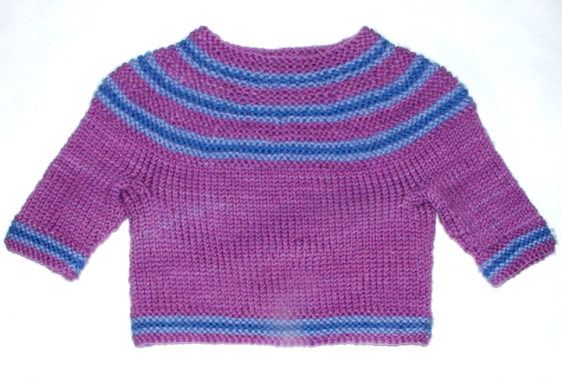
29 Jan Socks and Sweaters: Expand Your Knitting Horizons with Margaret Radcliffe
Margaret Radcliffe is teaching two Knitting classes next month at the Folk School: My First Sock (Feb. 28 – March 2 / Weekend) and the Easiest Sweaters in the World (March 2-8). Come learn new techniques to take your garment knitting to the next level (or the first level if you are new to socks and sweaters). I chatted with Margaret about Knitting, the Folk School, and what it is like to write about Knitting. Enjoy our interview!
CP: Where are you from?
MR: I grew up in Williamsburg, Virginia, and now live in Blacksburg.
CP: How long have you been coming to/teaching at the Folk School?
MR: Since 1997. I was starting out as a knitting designer and teacher and saw an ad for the Folk School in Knitters Magazine. I got a catalog and discovered that there was one week in the summer, Little/Middle Folk School, when I could come with my daughter. She was just old enough (seven), so that summer we both came. We loved it so much, we kept coming back. It was actually years before I even approached the school to teach-I was too busy learning. That summer was the beginning of a tradition, attending Little/Middle with my kids, that lasted 15 years. I started teaching knitting, both adult classes and during Little/Middle in 2004. A few years later I expanded to add dyeing to my classes.
CP: Why do you like teaching at the Folk School?
MR: There are so many reasons! First of all, I have as much fun teaching at the Folk School as I do taking classes. I teach all around the country and at some venues, I end up exhausted. At the Folk School, I come out of a week of teaching feeling exhilarated and recharged.
Wonderful facilities. The Wet Room is the perfect studio for dyeing and knitting, with all the facilities and equipment I need and plenty of space for the students to work.
Time, specifically the luxury of having enough time to really pursue what the students want to learn. Most places, I’m limited to a 3-hour or 6-hour class. At the Folk School, I usually have a whole week.
A non-competitive atmosphere, so everyone can learn at their own pace and all the teachers and students help each other. I also love the fact that the focus is on process rather than product. I teach techniques, rather than projects, because I want my students to have the tools to be creative and work independently-I don’t want to tell them exactly what to make. So I feel that my style of teaching fits right in with the Folk School philosophy.
The landscape and the campus. Nothing makes me happier than to get up early in the morning, go into the Wet Room or into the living room at Orchard House to set up and plan my class for the day, and to look across the fields to see fog rising over the creek and the mountains in the distance.
The community: the food in the Dining Hall, the singing, dancing and story telling, and all the friendly and interesting people you meet.
CP: What inspired you to write about knitting?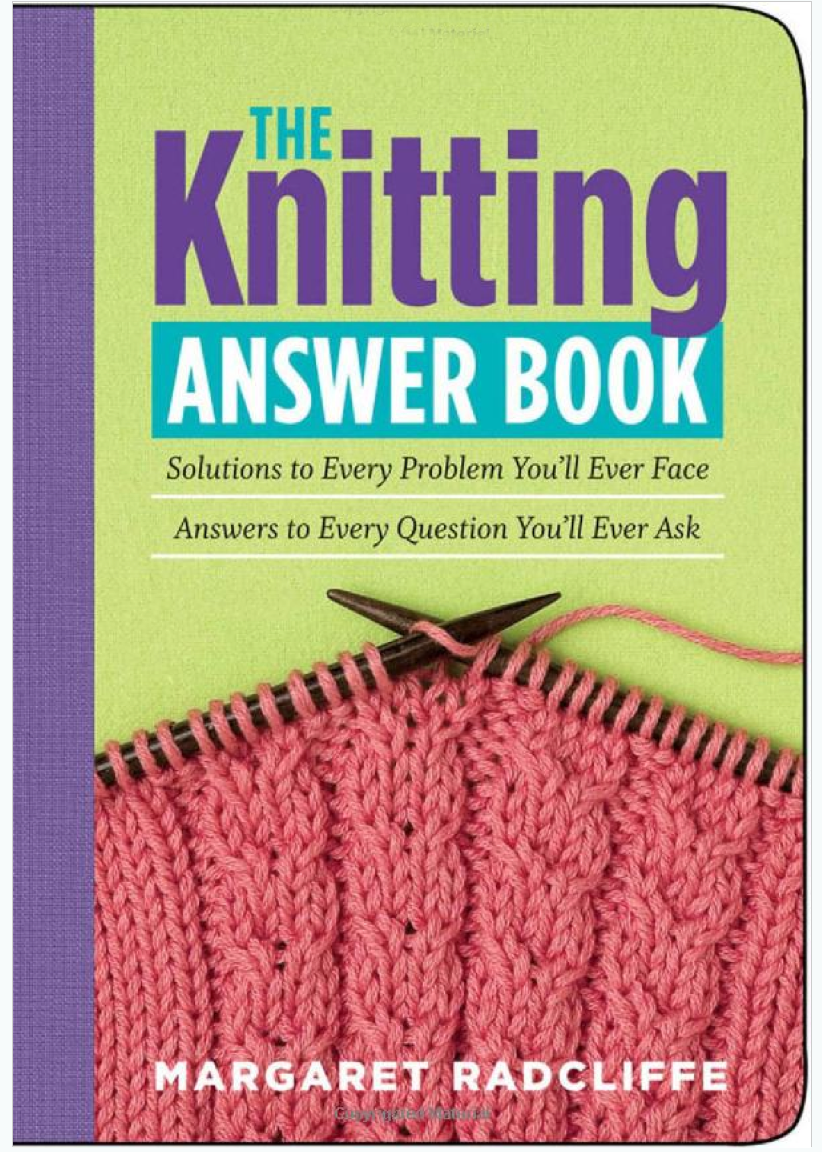 MR: I’m an avid reader and I’ve always wanted to be an author. Designing handknits involves writing knitting patterns and teaching knitting involves writing course handouts, so writing was already an inherent part of my professional knitting activities. I also have a background in academic editing, preparing texts for publications in journals and books, so it was a natural progression to combine my knowledge of knitting and my experience in writing and editing, and to offer editing services for others who write about knitting.
MR: I’m an avid reader and I’ve always wanted to be an author. Designing handknits involves writing knitting patterns and teaching knitting involves writing course handouts, so writing was already an inherent part of my professional knitting activities. I also have a background in academic editing, preparing texts for publications in journals and books, so it was a natural progression to combine my knowledge of knitting and my experience in writing and editing, and to offer editing services for others who write about knitting.
While working as a freelance technical and copy editor for Storey Publishing, they offered me the chance to write The Knitting Answer Book. Since then I’ve written three more books. My knitting business has gradually moved from being mainly focused on design, to teaching and to writing.
CP: Tell us about knitting socks. Is it easy? Is it hard?
MR: Knitting socks is easy, as soon as you know how to knit a tube the size of a foot. It can take a little practice to get comfortable knitting that tube, but that’s true of any craft that involves using your hands. Once you’ve acquired that skill, it’s easy to learn how to shape a heel and a toe. You don’t even need a pattern once you’ve grasped the basic concepts.
CP: What your favorite sweater that you’ve made?
MR: My Cape Point. I designed it for myself decades ago, and it’s one of the first patterns I published for other people to knit. It’s a short-sleeved top, that I originally worked in a silk and cotton blend. It’s got a lovely (and easy to work) slipped stitch pattern and a decorative pointed edging (also easy to work). I wore out my first one and need to find time to knit a new one.
CP: Do you have a preferred knitting needle?
MR: My preference is for wooden needles for most of my knitting, with long tapered points that make stitch manipulations easier. And my favorite brand is Darn Pretty needles from Dyakcraft. These are very high quality needles, handmade in small batches by the Dyaks, in Vermont. They’re made to order, so you get to choose the shape of the point and the color yourself.
CP: Do you have any favorite knitting notions or gadgets?
MR: I have a floor-standing swift and a ball winder made by Strauch Fiber Equipment Company (Joanne and Otto Strauch live near me and are friends). I think these are be best available, at least for my uses. I love the fact that I don’t need to clamp the swift to a table, I can just set it anywhere I like.
CP: What is your winter obsession?
MR: Curling up with popcorn and a mystery.
Speaking of Personal Style, let’s play this or that…
CP: Stripes or Solids?
MR: Neither – I like subtle shadings!
CP: Pullover or Cardigan?
MR: Pullover
CP: Alpaca or Angora?
MR: Alpaca
CP: Farm House or Keith House?
MR: Farm House as a retreat, Keith House if I’m feeling social. But I’ve often thought that if you set me down in Keith House blindfolded, I’d immediately know where I was by the smell of the wood paneling and the sound of the building.
CP: English Country or Contra or Square?
MR: Contra
CP: Oatmeal or Grits?
MR: Grits – especially the ones from Delta Grind.
Learn more about Margaret on her website: Maggie’s Rags or visit her on Facebook.
Margaret Radcliffe is teaching the following classes at the Folk School:
My First Sock (Feb. 28 – March 2 / Weekend)
Unlock the mysteries of the basic sock! Knit a sample sock, learning to turn a heel and shape a toe, and try other heel and toe shapings as time allows. Obtain guidelines for designing and fitting socks for anyone. This class is open to beyond-beginning knitters who can cast on, knit, purl, and decrease. Familiarity with circular knitting is helpful, but not required.
Easiest Sweaters in the World (March 2-8)
Top-down, seamless sweaters are the quickest to knit and easiest to fit. Make small samples of a raglan-sleeved sweater and a circular-yoked sweater. Try adding color patterns, stitch patterns, and embellishments. We’ll discuss how to make sweaters any size with any yarn and how to turn a pullover into a cardigan. Then plan your own sweater and, if time allows, start knitting it! We’ll take daily breaks to dye yarn and work on knitting techniques. For adventurous beginners and up (those who can cast on, knit, purl, increase, decrease, and bind off).




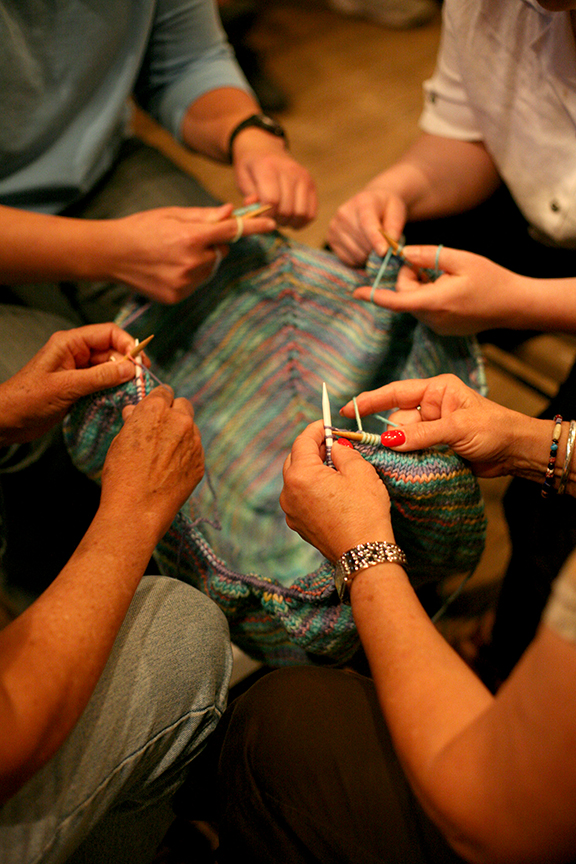
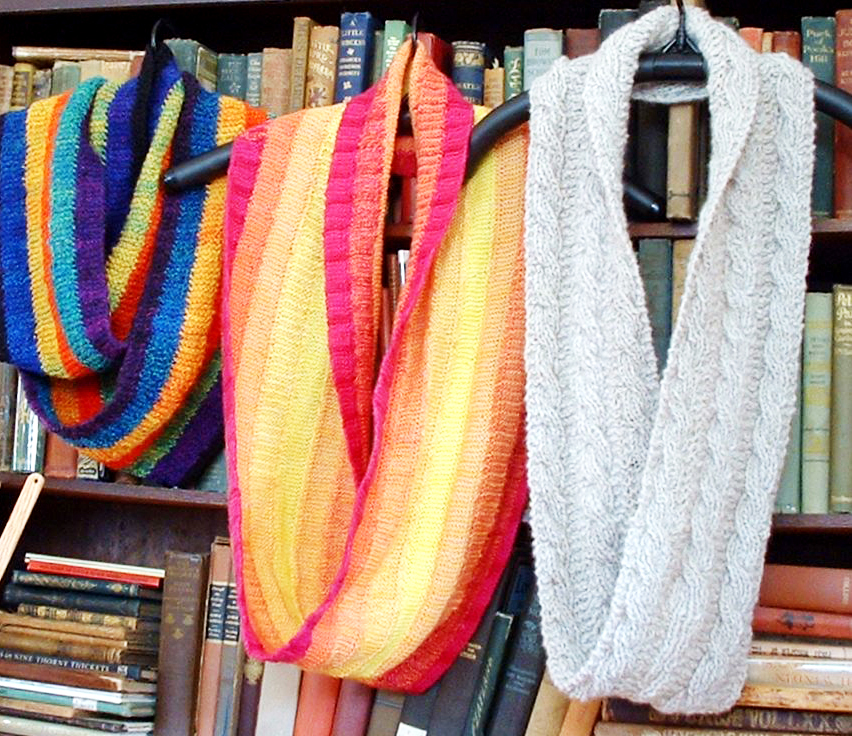
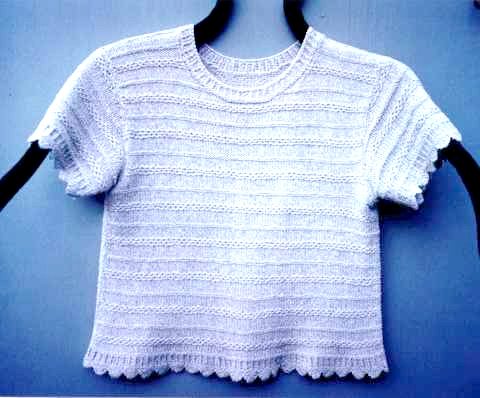
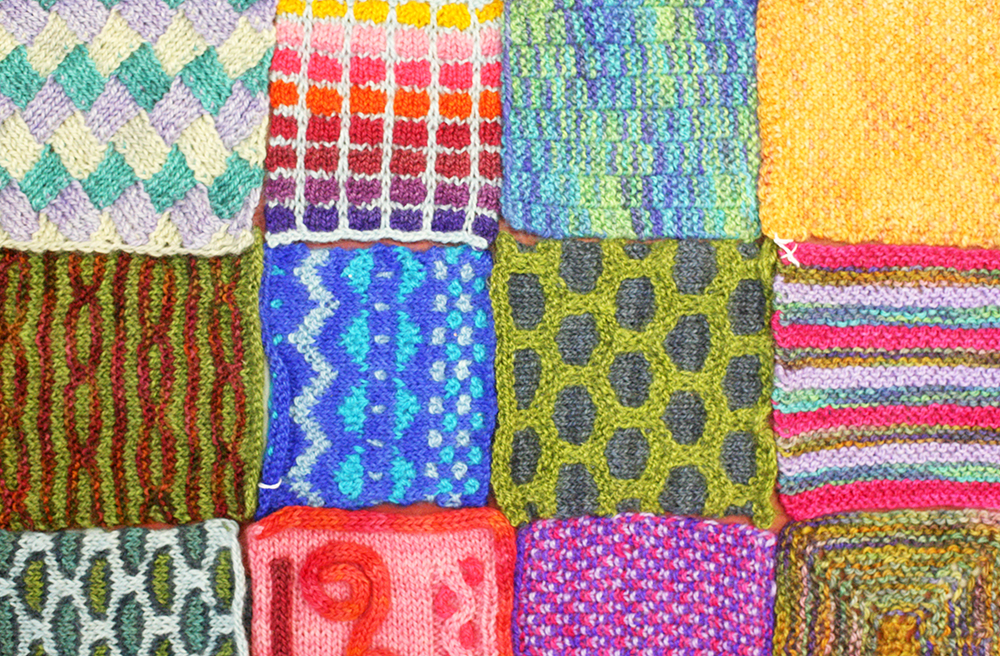
No Comments